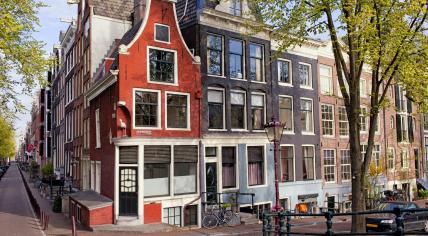
Every February and September, Lineapelle in Italy's Milan brings together tanneries, producers of accessories, fabrics and synthetic materials — all key players in the global supply chain for fashion, luxury and design — with a special emphasis on the leather industry. Courtesy of Lineapelle By Park Han-sol MILAN, Italy — At first glance, leather and sustainability may seem like an unlikely pairing. But, in recent decades, the leather industry has been striving to redefine the material within an environmental context, adopting strategies to further minimize its ecological footprint.
At its core, leather is a byproduct of the meat industry. Tanneries repurpose raw cattle and sheep hides — byproducts of food production that would otherwise end up in landfills — into fibers used for handbags, shoes, upholstery and automotive interiors. Even the waste and scraps from leather manufacturing find new life afterward in agriculture as fertilizers and in cosmetics as collagen.

In Italy, which produces a quarter of the world’s leather by value, sustainability in tanneries hinges on full supply chain traceability. The Institute of Quality Certification for the Leather Sector (ICEC) certification requires that tanneries track everything from the country of origin of the hides to the specific farms and slaughterhouses involved, ensuring ethical and transparent management of raw materials. Meanwhile, some suppliers are even moving beyond traditional animal hides altogether, exploring innovative alternatives like mushroom roots.
The 104th edition of Lineapelle, running from Sept. 17 to 19, features 1,259 exhibitors from 43 countries at the Fiera Milano exhibition center. Korea Times photo by Park Han-sol At Lineapelle, one can catch a glimpse of the world's latest trends and the future of greener leather production and processing.
Courtesy of Lineapelle And it is in the city of Milan that one can catch a glimpse of the world's latest trends and the future of greener leather production and processing. Twice a year, in February and September, Italy’s fashion capital hosts Lineapelle, a prominent trade show that brings together tanneries, producers of accessories, fabrics and synthetic materials — all key players in the global supply chain for fashion, luxury and design. Visitors view curated samples of leather, fabrics and synthetic materials at Lineapelle.
Courtesy of Lineapelle Veneto-based tannery Gruppo Dani launched its Olivae Collection last year, which uses olive mill wastewater in processing its leather. Courtesy of Gruppo Dani The current 104th edition, running from Sept. 17 to 19, features 1,259 exhibitors from 43 countries at the Fiera Milano exhibition center.
Among the family-run Italian tanneries that have sustainability at the heart of their philosophy is Gruppo Dani. Founded in 1950 by Angelo Dani in Veneto, the company processes leather for apparel, footwear, upholstery, saddlery and smart devices. A highlight of its presence at Lineapelle is the Olivae Collection, launched last year.
“All of these leathers here come from two kinds of waste — raw hides, which are leftovers of the food industry, and olive mill wastewater,” Alessia Zaramella, Gruppo Dani’s senior marketing and communication officer, told The Korea Times. “Italy is well-known for both leather and olive oil and we like to give a second life to these wastes.” Gruppo Dani is one of Italy’s few remaining full-cycle tanneries, she added, meaning that every step — from sourcing fresh raw hides from Europe to the final finishing — is done within the Veneto Leather District.
This allows the company to closely monitor its CO2 emissions and energy consumption. In collaboration with chemical manufacturer L’Officina Chimica and Italy's Solofra Tanning District, Milan-based R&D center D-house Laboratorio Urbano has reimagined leather scraps and waste powders into decorative interior tiles. Courtesy of D-house Laboratorio Urbano 3D-printed accessories created from tannery waste / Courtesy of D-house Laboratorio Urbano In another corner of the fair, Milan-based R&D center D-house Laboratorio Urbano showcased how leather production waste that cannot be recycled as fertilizer or collagen supplements can gain a new lease on life via its patent-pending technology.
In collaboration with chemical manufacturer L’Officina Chimica and Italy's Solofra Tanning District, the laboratory has reimagined leather scraps and waste powder from the shaving process into 3D-printed earrings, decorative interior tiles and embroidered fibers. “The scraps produced during the tanning process all have different characteristics depending on the chemical treatments they go through. While some residual parts can be reused (in traditional ways) there are still others that cannot be repurposed like that,” explained Eva Monachini, D-House coordinator, noting that the team’s goal is to transform these byproducts into “a new raw material instead of unusable waste.
” California-headquartered MycoWorks cultivates mycelium, the root-like network of mushroom fungi, from sawdust, allowing it to naturally form into thin, entangled sheets within four to five weeks. Once the mycelium sheet is fully developed, it undergoes finishing processes in external tanneries and achieves the look and feel of leather. Courtesy of MycoWorks Creative Studio Concurrently, more alternatives to animal leather, often marketed as “vegan leather,” are gaining traction in the fashion industry.
What many may not realize, however, is that most of these materials rely heavily on plastics or polyurethanes in their production. Even plant-based leathers made from shredded agricultural waste like pineapple leaves or apple peels need plastic backing for structure. In contrast, California-headquartered MycoWorks has pioneered a more environmentally sound approach to animal leather alternatives.
The company cultivates mycelium, the root-like network of mushroom fungi, from sawdust, allowing it to naturally form into thin, entangled sheets within four to five weeks. To improve structure and strength, fibers like cotton can be added for the mushroom spores to feed on as they grow. Once the mycelium sheet is fully developed, it undergoes finishing processes in external tanneries.
“It's not an animal hide, so it doesn’t have residual proteins like collagen that you normally need to remove in tanneries to prevent rotting. As a result, we don’t use chromium (one of the most polluting chemicals in leather manufacturing), or large amounts of water,” said Frederick Martel, MycoWork’s senior vice president of sales and business development, adding that the company’s clients include luxury brands like Hermès and automotive giant General Motors..














